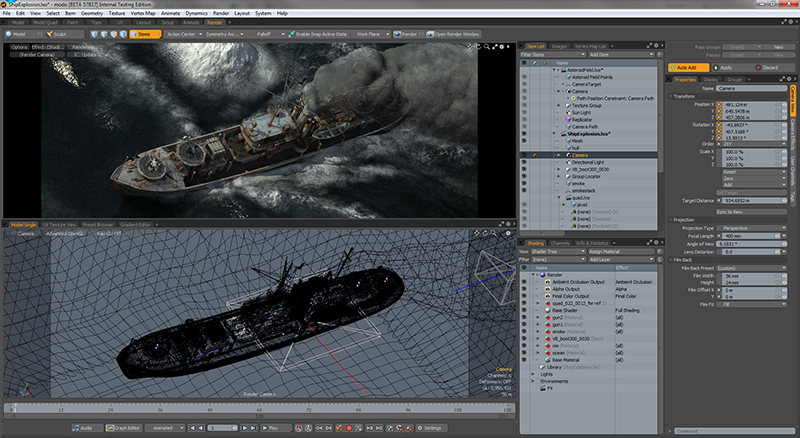
Modo is a 3D modeling, animation and rendering program that runs on Windows, Mac, and Linux computer systems. Originally created by Luxology, a company formed by the fusion of artists and scientists, Modo is a tool that artists and scientists would want to use. Designed as a next-generation application, with a carefully considered interface and tool set, it works in harmony to provide you with a fluid and intuitive workflow.

Luxology created Modo with the understanding that users would come from a broad spectrum of industries and disciplines, meaning it would need to be flexible. Modo can easily slide in alongside existing pipelines, providing individual functionality, like modeling, sculpting, or texture painting. It supports a wide variety of industry-standard file and image formats, allowing the bi-directional exchange of data. Modo can also act as the entire pipeline itself, allowing you to design, model, animate, and render entirely in the same environment.
For users who employ Modo as a component in a multi-application pipeline, there are various file format options that allow Modo to inter-operate with most pipeline systems. For more information on these file formats, see Import and Export File Formats in Modo. The user interface also allows for the quick remapping of controls, so that as the artist bounces between Modo and another pipeline application, the workflow is not impaired by having to make the mental switch to change things as basic as how to tumble a viewport or activate the Move tool. The Modo interface itself is so malleable it is effectively fluid in operation. This allows the use of a standard interface configuration and, thus, utilize Modo in a specific, focused mode, or to customize and adapt Modo to their most demanding workflow requirements.
The Modo architecture enables a new kind of workflow altogether - a richer and much less linear workflow. The core fusion of the various technologies (modeling, sculpting, painting, rigging, animating, lighting, texturing, simulation, and rendering) allow you to leverage all technologies literally at the same time. This deep integration also enables you to leverage rendering technology while painting, or to use geometry to create new images, which can later be used as brushes to paint detail onto other models. This interweaving of technologies makes the Modo experience much greater than the sum of its parts.